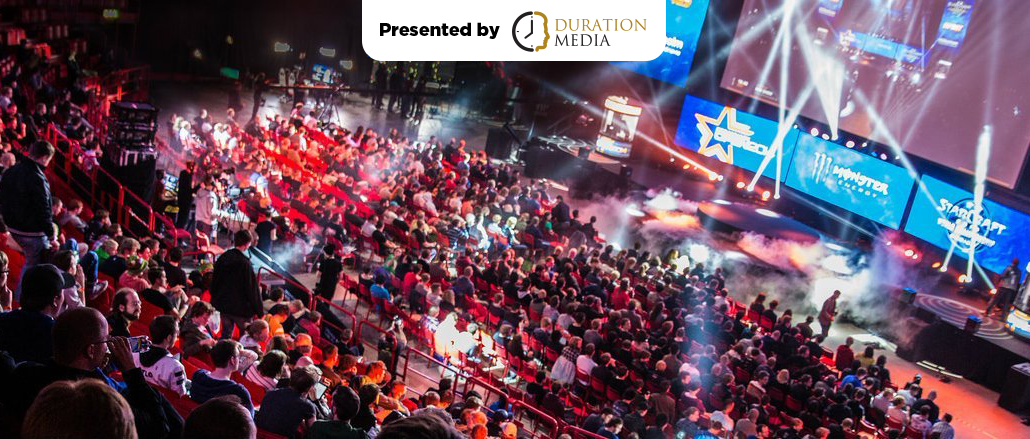
The esports industry is projected to surpass $1 billion in revenue this year, yet those who aren’t directly playing or working in the community can barely explain what esports is. You might have heard of Twitch — an interactive livestreaming platform that lets gamers film themselves and their screens while they play video games — or maybe you flipped past the televised “League of Legends Championship Series.” Otherwise, the industry skews young, and if you’re not a gamer, you’re likely unaware of just how expansive it is.
However, as advertisers are trying to figure out how to best tap into that burgeoning consumer base — a consumer based that, on average for Twitch users, has an annual household income of $72,500, according to a 2018 Nielsen Games study — the Twitch-sponsored Esports Summit at Advertising Week identified one of the biggest problems with the industry: Its massive global scale limits the amount of localized and standardized metrics that help marketers track the success of their ad dollars.
“Esports’ greatest strength is also its biggest weakness, which is having a global reach.” said Nathan Lindberg, senior director of sponsorships at Twitch.
Lindberg said that when a new client comes to him asking where their dollars are best spent between esports, television or a spot during a soccer game, he says it’s crucial to justify through data that partners can yield the same results from advertising during a streaming session on Twitch as they do from advertising during a soccer game.
Brian Lancey, Mastercard’s head of global marketing and sponsorships, said, “At some point, someone will ask, if I have to spend one dollar, is that best spent on esports versus a TV spot versus something else? And if we can’t justify that through data, esports will always lose out.”
However, panelists bemoaned the fact that there is still no standardization when it comes to metrics for esports, like average minute audience, and Lindberg explained that he’s hearing partners say that they love spending in the industry, but can’t continue doing so if they have no way of tracking the new customers or driving value. So the effort at Twitch, and what he expects is the rest of the industry, is to push toward creating a standardized system for data tracking.
Esports is the same thing as gaming, right?
Yes and no. Lancey said that while they are connected, they’re not the same. “Esports is kind of like major league baseball, and video gaming is just the sport.” So if you’re trying to reach a broader audience, gaming is industry to focus on. To reach a deeper and more invested customer, esports is probably your better option.
Esports is not just for endemic partners.
Mastercard is categorized as a non-endemic partner for the video game League of Legends, even though Lindberg suggested, “What’s more endemic than the card you use to pay for game items?” But as a non-endemic partner, Lancey said the company has had a lot of success with reaching audiences by experimenting on the same models used by the endemic brands, like headphone manufacturers and PC retailers.
For example, Mastercard shifted the idea of an influencer unboxing video by taking iconography from League of Legends and bringing it to life with very little branding. It then sent out these gift packages to gamers in 22 different countries, who shared the packages with their followers via Twitch.
“That’s the kind of fun scale that these brands can have. When you’re a global brand, there is a really cool way to interact in a way that is global, but feels hyper-localized for the people in those markets,” said Lindberg. He continued that activations like this are a strong way to connect partners with, not only the core community of professional esports players but the other millions of players at home watching through the screen as well.
These partnerships are symbiotic as well, with global brands like Mastercard and Honda giving validity and credibility to the esports industry when they participate within that ecosystem.
The other problem with esports is accessibility.
Steve Arhancet, co-CEO and owner of pro esports organization Team Liquid, suggests to brands who want to make contact with the esports community but feel like that community is speaking a foreign language, should hand over the keys to the partnership.
When Jersey Mike’s Subs wanted to reach Team Liquid’s following, Arhancet sent them scripts for the social media team to follow, which included exact wording and timing for each post. He explained that he sees Team Liquid as a consultancy that’s helping guide its partners through the space. This is because, more often than not, the brand partners and the agencies they work with don’t understand the needs of the esports industry or how to navigate successful conversations with their fan base the way that an actual esports organization does.
More in Media

Podcast companies turn to live events to capture growing advertiser spend
The surge in the number of live podcast events in 2025 reflects a broader shift: advertisers are betting bigger on podcasts — not just as an audio channel but as a full-fledged creator economy play.

Media Briefing: ‘Cloudflare is locking the door’: Publishers celebrate victory against AI bot crawlers
After years of miserably watching their content get ransacked for free by millions of unidentified AI bot crawlers, publishers were finally thrown a viable lifeline.

How Vogue could navigate potential industry headwinds as Anna Wintour — who agency execs say made ad dollars flow — brings on new edit lead
Anna Wintour’s successor at Vogue will have to overcome the myriad of challenges facing fashion media and the digital publishing ecosystem.





